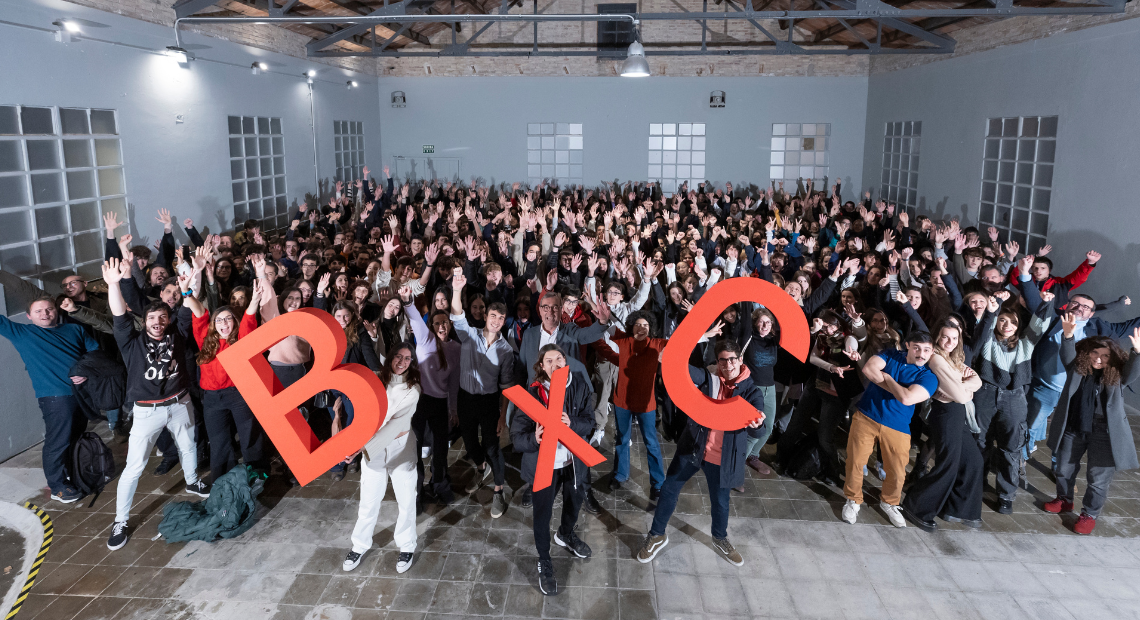Description
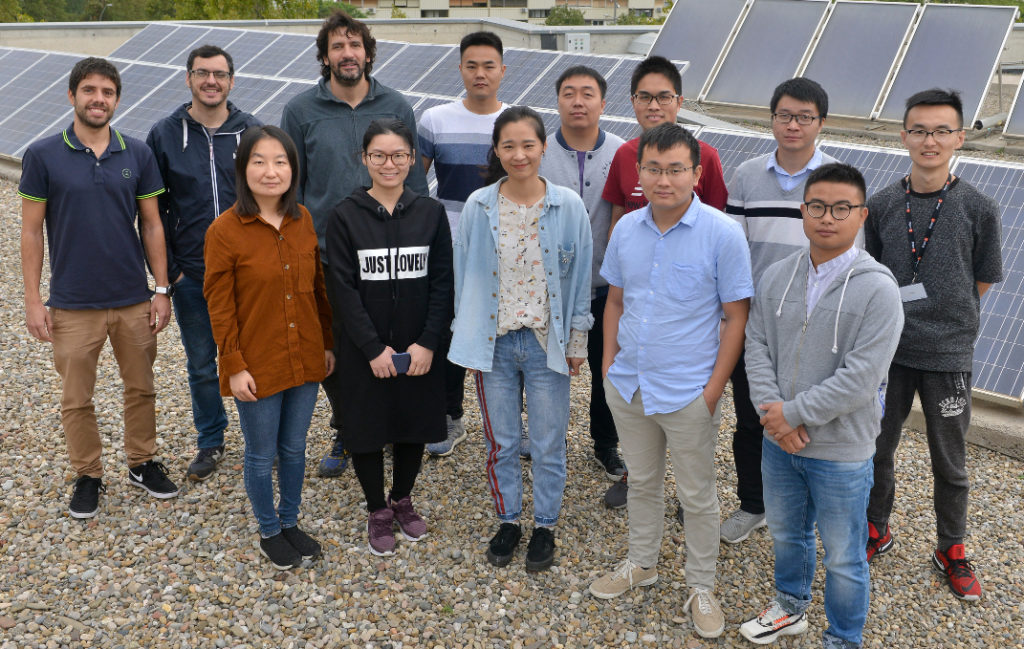
The Functional Nanomaterials Group designs and engineers nanomaterials with optimized functionalities and applies them in energy conversion, energy storage and environmental remediation technologies.
Our efforts are mainly focused on the synthesis of colloidal nanoparticles, and their assembly and use in different energy conversion technologies. In particular, we have pioneered strategies to produce complex multinary chalcogenides, phosphides and oxides and on their application in thermoelectric energy conversion, Li-S batteries and electrocatalysis.
A major outcome of our work has been the production of bulk materials with world record ZT values, which would allow up to 60% higher energy conversion efficiencies than current commercial devices. We have also developed innovative techniques to manipulate the surface chemistry of colloidal nanocrystals and assemble them into clusters, thin films, gels and bulk nanocomposites.
Our laboratories are equipped with the all the necessary set-ups to undertake every stage in the development of nanomaterial-based energy conversion devices, including nanomaterials synthesis, manipulation and fabrication of macroscopic structures and devices, material functional characterization and device test.
The laboratory equipment photos of Functional Nanomaterials research group are available in Multimedia Gallery.
<strong>SYNTHESIS</strong>
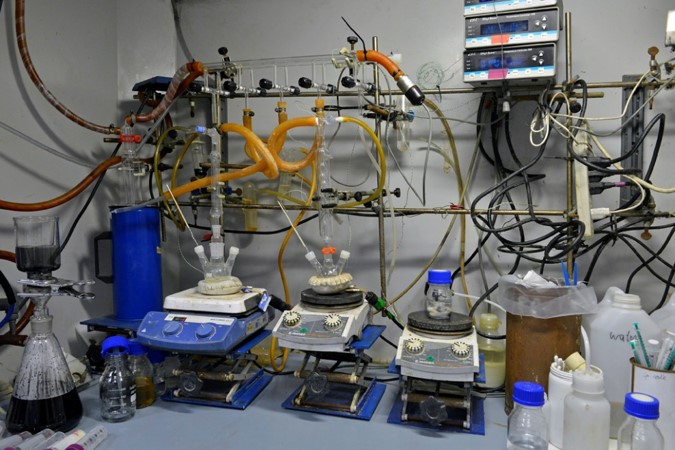
• Colloidal nanocrystals and quantum dots
• Nanowires, nanotubes
• 2D materials
• Magnetic nanoparticles
• Reactive inks
• Thin films
PROCESSING
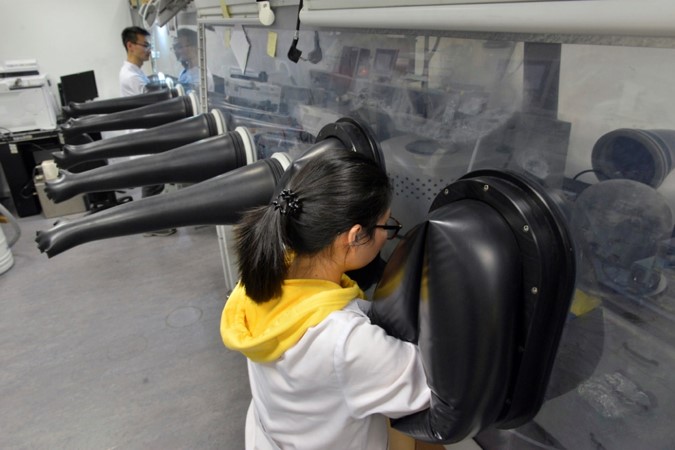
• Surface functionalization
• Nanoparticle assembly, composites
• Textured nanomaterials
• Nanoparticle-based inks and gels
• Supercritical drying
• Rapid hot press
• High resolution rapid 3D printing
APPLICATIONS
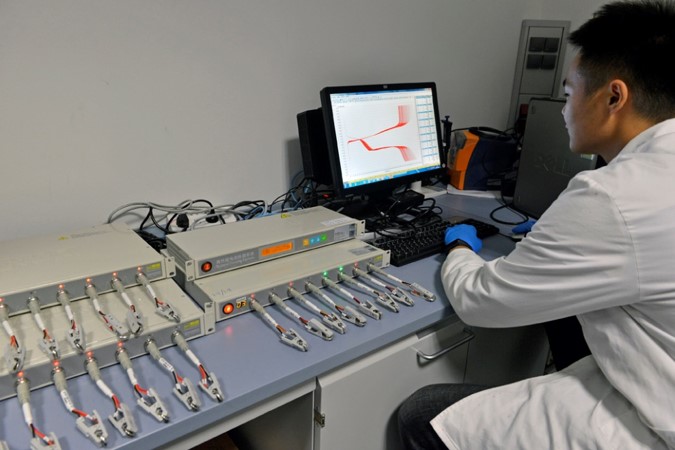
• Thermoelectrics
• Fuel cells
• Li-S and metal-air batteries
• (Electro-, photo-) catalysis
• Fuel synthesis
• Environmental remediation
• Functional coatings








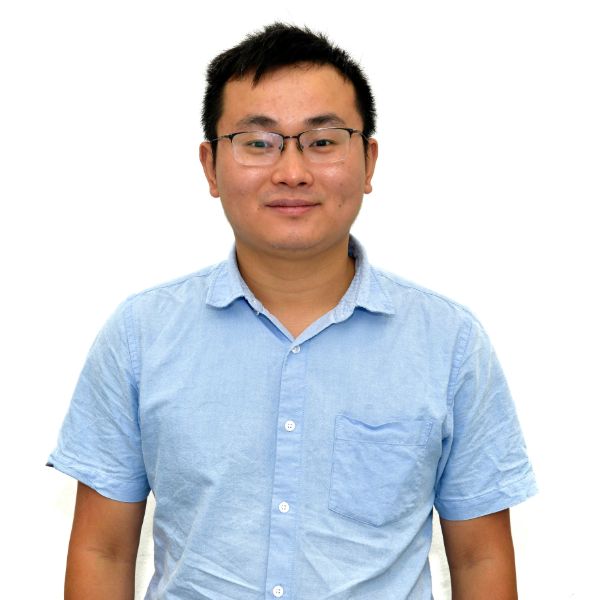





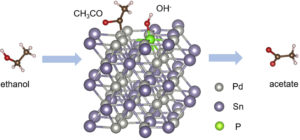 Direct ethanol fuel cells (DEFCs) show a huge potential to power future electric vehicles and portable electronics, but their deployment is currently limited by the unavailability of proper electrocatalysis for the ethanol oxidation reaction (EOR). In this work, we engineer a new electrocatalyst by incorporating phosphorous into a palladium-tin alloy and demonstrate a significant performance improvement toward EOR. We first detail a synthetic method to produce Pd2Sn:P nanocrystals that incorporate 35% of phosphorus. These nanoparticles are supported on carbon black and tested for EOR. Pd2Sn:P/C catalysts exhibit mass current densities up to 5.03 A mgPd−1, well above those of Pd2Sn/C, PdP2/C and Pd/C reference catalysts. Furthermore, a twofold lower Tafel slope and a much longer durability are revealed for the Pd2Sn:P/C catalyst compared with Pd/C. The performance improvement is rationalized with the aid of density functional theory (DFT) calculations considering different phosphorous chemical environments. Depending on its oxidation state, surface phosphorus introduces sites with low energy OH− adsorption and/or strongly influences the electronic structure of palladium and tin to facilitate the oxidation of the acetyl to acetic acid, which is considered the EOR rate limiting step. DFT calculations also points out that the durability improvement of Pd2Sn:P/C catalyst is associated to the promotion of OH adsorption that accelerates the oxidation of intermediate poisoning COads, reactivating the catalyst surface.
Direct ethanol fuel cells (DEFCs) show a huge potential to power future electric vehicles and portable electronics, but their deployment is currently limited by the unavailability of proper electrocatalysis for the ethanol oxidation reaction (EOR). In this work, we engineer a new electrocatalyst by incorporating phosphorous into a palladium-tin alloy and demonstrate a significant performance improvement toward EOR. We first detail a synthetic method to produce Pd2Sn:P nanocrystals that incorporate 35% of phosphorus. These nanoparticles are supported on carbon black and tested for EOR. Pd2Sn:P/C catalysts exhibit mass current densities up to 5.03 A mgPd−1, well above those of Pd2Sn/C, PdP2/C and Pd/C reference catalysts. Furthermore, a twofold lower Tafel slope and a much longer durability are revealed for the Pd2Sn:P/C catalyst compared with Pd/C. The performance improvement is rationalized with the aid of density functional theory (DFT) calculations considering different phosphorous chemical environments. Depending on its oxidation state, surface phosphorus introduces sites with low energy OH− adsorption and/or strongly influences the electronic structure of palladium and tin to facilitate the oxidation of the acetyl to acetic acid, which is considered the EOR rate limiting step. DFT calculations also points out that the durability improvement of Pd2Sn:P/C catalyst is associated to the promotion of OH adsorption that accelerates the oxidation of intermediate poisoning COads, reactivating the catalyst surface.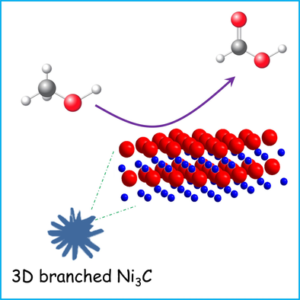 Highly active Ni3C branched particles are demonstrated and their selective electrocatalytic conversion of methanol to formate is probed by using advanced in situ infrared spectroscopy combined with nuclear magnetic resonance spectroscopy.
Highly active Ni3C branched particles are demonstrated and their selective electrocatalytic conversion of methanol to formate is probed by using advanced in situ infrared spectroscopy combined with nuclear magnetic resonance spectroscopy.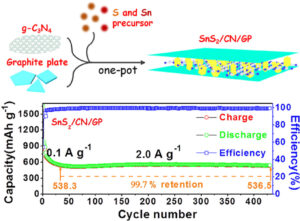 Tin disulfide is a promising anode material for Li-ion batteries (LIB) owing to its high theoretical capacity and the abundance of its composing elements. However, bare SnS2 suffers from low electrical conductivity and large volume expansion, which results in poor rate performance and cycling stability. Herein, we present a solution-based strategy to grow SnS2 nanostructures within a matrix of porous g-C3N4 (CN) and high electrical conductivity graphite plates (GPs). We test the resulting nanocomposite as anode in LIBs. First, SnS2 nanostructures with different geometries are tested, to find out that thin SnS2 nanoplates (SnS2-NPLs) provide the highest performances. Such SnS2-NPLs, incorporated into hierarchical SnS2/CN/GP nanocomposites, display excellent rate capabilities (536.5 mA h g−1 at 2.0 A g−1) and an outstanding stability (∼99.7% retention after 400 cycles), which are partially associated with a high pseudocapacitance contribution (88.8% at 1.0 mV s−1). The excellent electrochemical properties of these nanocomposites are ascribed to the synergy created between the three nanocomposite components: i) thin SnS2-NPLs provide a large surface for rapid Li-ion intercalation and a proper geometry to stand volume expansions during lithiation/delithiation cycles; ii) porous CN prevents SnS2-NPLs aggregation, habilitates efficient channels for Li-ion diffusion and buffer stresses associated to SnS2 volume changes; and iii) conductive GPs allow an efficient charge transport.
Tin disulfide is a promising anode material for Li-ion batteries (LIB) owing to its high theoretical capacity and the abundance of its composing elements. However, bare SnS2 suffers from low electrical conductivity and large volume expansion, which results in poor rate performance and cycling stability. Herein, we present a solution-based strategy to grow SnS2 nanostructures within a matrix of porous g-C3N4 (CN) and high electrical conductivity graphite plates (GPs). We test the resulting nanocomposite as anode in LIBs. First, SnS2 nanostructures with different geometries are tested, to find out that thin SnS2 nanoplates (SnS2-NPLs) provide the highest performances. Such SnS2-NPLs, incorporated into hierarchical SnS2/CN/GP nanocomposites, display excellent rate capabilities (536.5 mA h g−1 at 2.0 A g−1) and an outstanding stability (∼99.7% retention after 400 cycles), which are partially associated with a high pseudocapacitance contribution (88.8% at 1.0 mV s−1). The excellent electrochemical properties of these nanocomposites are ascribed to the synergy created between the three nanocomposite components: i) thin SnS2-NPLs provide a large surface for rapid Li-ion intercalation and a proper geometry to stand volume expansions during lithiation/delithiation cycles; ii) porous CN prevents SnS2-NPLs aggregation, habilitates efficient channels for Li-ion diffusion and buffer stresses associated to SnS2 volume changes; and iii) conductive GPs allow an efficient charge transport.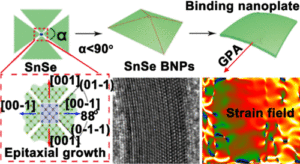 Strain engineering has become an emerging strategy to tailor the performance of nanocatalysts. However, current strained catalysts overwhelmingly rely on stresses originated at catalyst–support interfaces. Self-standing strained nanostructures are extremely challenging to produce, and thus their impact on catalytic and photocatalytic activities remains largely unknown. Herein, we propose a ligand-based colloidal strategy for the one-step growth of bended metal chalcogenide nanoplates with a built-up strain. This strategy is based on the seeded growth of strained nanostructures from sacrificial seeds which provide a proper lattice mismatch. We demonstrate this strategy for the synthesis of strained orthorhombic SnSe and SnS nanoplates from rock salt SnS seeds. We probe not only the presence of atomic distortions in the periodic lattice but also its coupling with the generation of a large density of selenium vacancies. Geometrical phase analysis evidences the formation of a strain field in self-bended SnSe nanoplates, with a maximum tensile strain up to 12%. Theoretical and experimental results further reveal that the strain-related selenium vacancies strongly affect the electronic structure of SnSe and facilitate the mobility of photogenerated charge carriers, which result in a significantly improved photoelectrochemical activity. The strategy presented here opens a new avenue for precisely tuning semiconductor functionalities via strain engineering.
Strain engineering has become an emerging strategy to tailor the performance of nanocatalysts. However, current strained catalysts overwhelmingly rely on stresses originated at catalyst–support interfaces. Self-standing strained nanostructures are extremely challenging to produce, and thus their impact on catalytic and photocatalytic activities remains largely unknown. Herein, we propose a ligand-based colloidal strategy for the one-step growth of bended metal chalcogenide nanoplates with a built-up strain. This strategy is based on the seeded growth of strained nanostructures from sacrificial seeds which provide a proper lattice mismatch. We demonstrate this strategy for the synthesis of strained orthorhombic SnSe and SnS nanoplates from rock salt SnS seeds. We probe not only the presence of atomic distortions in the periodic lattice but also its coupling with the generation of a large density of selenium vacancies. Geometrical phase analysis evidences the formation of a strain field in self-bended SnSe nanoplates, with a maximum tensile strain up to 12%. Theoretical and experimental results further reveal that the strain-related selenium vacancies strongly affect the electronic structure of SnSe and facilitate the mobility of photogenerated charge carriers, which result in a significantly improved photoelectrochemical activity. The strategy presented here opens a new avenue for precisely tuning semiconductor functionalities via strain engineering.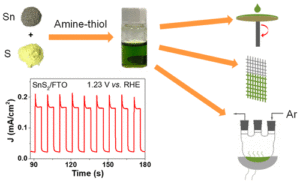 We present a simple, versatile, and scalable procedure to produce SnS2 nanostructured layers based on an amine/thiol-based molecular ink. The ratios amine/thiol and Sn/S, and the reaction conditions, are systematically investigated to produce phase-pure SnS2 planar and conformal layers with a tremella-like SnS2 morphology. Such nanostructured layers are characterized by excellent photocurrent densities. The same strategy can be used to produce SnS2–graphene composites by simply introducing graphene oxide (GO) into the initial solution. Conveniently, the solvent mixture is able to simultaneously dissolve the Sn and Se powders and reduce the GO. Furthermore, SnS2-xSex ternary coatings and phase-pure SnSe2 can be easily produced by simply incorporating proper amounts of Se into the initial ink formulation. Finally, the potential of this precursor ink to produce gram-scale amounts of unsupported SnS2 is investigated.
We present a simple, versatile, and scalable procedure to produce SnS2 nanostructured layers based on an amine/thiol-based molecular ink. The ratios amine/thiol and Sn/S, and the reaction conditions, are systematically investigated to produce phase-pure SnS2 planar and conformal layers with a tremella-like SnS2 morphology. Such nanostructured layers are characterized by excellent photocurrent densities. The same strategy can be used to produce SnS2–graphene composites by simply introducing graphene oxide (GO) into the initial solution. Conveniently, the solvent mixture is able to simultaneously dissolve the Sn and Se powders and reduce the GO. Furthermore, SnS2-xSex ternary coatings and phase-pure SnSe2 can be easily produced by simply incorporating proper amounts of Se into the initial ink formulation. Finally, the potential of this precursor ink to produce gram-scale amounts of unsupported SnS2 is investigated.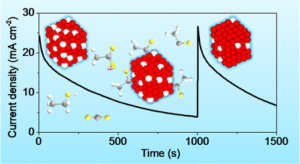 Intermetallic Pd3Pb nanocrystals with controlled size and cubic geometry exposing (100) facets are synthesized and tested as electrocatalysts for ethanol oxidation in alkaline media. We observe the ethanol oxidation activity and stability to be size-dependent. The 10 nm Pd3Pb nanocrystals display the highest initial current densities, but after few hundred cycles, the current density of smaller nanocrystals becomes much larger. All of the catalysts exhibit a pronounced current decay during the first 500 s of continuous operation, which is associated with the accumulation of strongly adsorbed reaction intermediates, blocking reaction sites. These adsorbed species can be removed by cycling the catalysts or maintaining them at slightly higher potentials for a short period of time to oxidize and later reduce the Pd surface. Such simple cleaning processes, that can be performed during operation breaks without cell disassembly, is sufficient to effectively remove the poisoning species adsorbed on the surface and recover the electrocatalytic activity.
Intermetallic Pd3Pb nanocrystals with controlled size and cubic geometry exposing (100) facets are synthesized and tested as electrocatalysts for ethanol oxidation in alkaline media. We observe the ethanol oxidation activity and stability to be size-dependent. The 10 nm Pd3Pb nanocrystals display the highest initial current densities, but after few hundred cycles, the current density of smaller nanocrystals becomes much larger. All of the catalysts exhibit a pronounced current decay during the first 500 s of continuous operation, which is associated with the accumulation of strongly adsorbed reaction intermediates, blocking reaction sites. These adsorbed species can be removed by cycling the catalysts or maintaining them at slightly higher potentials for a short period of time to oxidize and later reduce the Pd surface. Such simple cleaning processes, that can be performed during operation breaks without cell disassembly, is sufficient to effectively remove the poisoning species adsorbed on the surface and recover the electrocatalytic activity.

